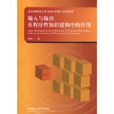《輸入與輸出在程式性知識建構中的作用》是一本顧琦一編制,由外語教學與研究出版社在 2009年出版的書籍。
基本介紹
- 書名:輸入與輸出在程式性知識建構中的作用
- 作者:顧琦一
- ISBN:9787560091617
- 定價:49.90 元
- 出版社:外語教學與研究出版社
- 出版時間:2009年12月
- 開本:16開
內容簡介,圖書目錄,
內容簡介
《輸入與輸出在程式性知識建構中的作用》主要內容簡介:本研究旨在探索教學環境下成人外語學習過程中,輸入與輸出對語言能力發展的作用。研究者著重從理論視角對外語習得進行探討,運用安德森(Anderson)(1983,2000,2004)的思維適應性控制理論(AdaptiveControlofThought),把第二語言能力發展界定為程式性知識逐步建構的過程。程式性知識是第二語言學習者解決各類語言任務的知識。程式性知識的建構由知識表征和知識提取的發展共同促成,通過不斷實踐(practice)來實現。陳述性知識在程式性知識建構過程中雖然起到了積極作用,但是並不能轉換成為程式性知識。
第二語言程式性知識的建構通過輸入、輸出兩類語言實踐來成就。輸入在語言習得中不可或缺,輸入和輸出在二語習得過程中不可分割,因此本研究建立了將輸入與輸出結合起來進行考察的理論和研究架構。
本研究通過控制對比實驗考察了輸入和“輸入+輸出”語言實踐在第二語言程式性知識建構過程中的作用。實驗選取英語關係從句為目標語言項,對成人外語學習者分別進行了輸入和“輸入+輸出”兩種語言實踐的實驗處理。研究者對被試者在前測、後測和跟蹤後測中,實施理解、表達和語法判斷三類計時語言運用任務中的表現,進行組間比較和組內比較,發現被試者在陳述性知識發展基本穩定的情況下,“輸入+輸出”組的程式性知識發展明顯優於輸入組。實驗結果表明:輸入與輸出語言實踐的結合在輸入和輸出都有限的外語環境下的二語習得過程中必不可少。
圖書目錄
List of Tables
List of Figures
Abbreviations
Chapter 1 Introduction
1.1 Background of the Present Study
1.1.1 Status of Research into Input and Output in SLA
1.1.2 Characteristics of Instructed EFL Learning
1.2 Scope of the Present Study
1.3 Research Methodology
1.4 Significance of the Study
1.5 Outline of the Dissertation
1.6 Definition of the Terms
Chapter 2 Foreign Language Development: A Construction Process of Procedural Knowledge
2.1 Introduction
2.2 Language and Language Acquisition
2.2.1 Modular Positions
2.2.2 Non-modular Positions
2.2.3 Position of the Present Study
2.3 Theoretical Framework: The ACT Theory
2.3.1 Declarative Knowledge and Procedural Knowledge
2.3.2 Stages of Knowledge Development
2.3.3 A Problem with the ACT Theory
2.4 Supportive Arguments from Studies of L2 Knowledge
2.4.1 Bialystok's Theory
2.4.2 McLaughlin's Theory
2.4.3 Convergence of Anderson, Bialystok and McLaughlin
2.5 Declarative Knowledge in the Development of Procedural Knowledge
2.5.1 The Non-interface Positions
2.5.2 The Interface Positions
2.5.3 Position on the Interface Issue in the Present Study
2.6 Summary
Chapter 3 Input-based and Output-based L2 Learning Theories
3.1 Introduction
3.2 Input-based Learning Theories
3.2.1 The Input Hypothesis
3.2.2 The Input Processing Model and Processing Instruction
3.3 Output-based Learning Theories
3.3.1 Early Theories Incorporating Output into L2 Acquisition
3.3.2 The Comprehensible Output Hypothesis
3.4 A Preliminary Reanalysis of the Role of Input and Output
3.4.1 Inseparability of Output from Input
3.4.2 De Bot's Speculation About Output in Proceduralization
3.5 Summary
Chapter 4 English Relative Clauses and Acquisition Studies
4.1 Introduction
4.2 English Relative Clauses
4.2.1 Restrictive and Nonrestrictive English Relative Clauses
4.2.2 Grammatical Description of the Restn'ctive Relative Clauses
4.2.3 Types of Restrictive Relative Clauses in English
4.3 The Noun Phrase Accessibility Hierarchy
4.4 The Acquisition of English Relative Clauses
4.4.1 L1 Acquisition of English Relative Clauses
4.4.2 L2 Acquisition of English Relative Clauses
4.5 Instructional Intervention in the Acquisition of English Relative Clauses
4.5.1 Instructional Effects on L1 Acquisition
4.5.2 Instructional Effects on L2 Acquisition
4.6 Summary
Chapter 5 Research Methodology
5.1 Introduction
5.2 Research Questions and Hypotheses
5.3 Rationale for the Research Design
5.4 Overall Design
5.5 Pilot Studies
5.5.1 A Case Study
5.5.2 A Controlled Pilot Study
5.6 Research Design
5.6.1 Subjects
5.6.2 Experimental Schedule
5.6.3 Treatment
5.6.4 Instruments
5.6.5 Scoring and Analysis
5.7 Summary
Chapter 6 Results
6.1 Introduction
6.2 Examination of Pretreatment Equivalence
6.3 Analysis of the Offline GJT
6.4 Examination of the 12 Research Hypotheses
6.4.1 Results of the Immediate Posttest
6.4.2 Results of the Follow-up Posttest
6.5 Further Analysis
6.5.1 Effect Size Analysis
6.5.2 Comparison Between the Comprehension and the Production Tasks
6.5.3 Comparison Between the Online GJT and the Ofitine GJT
6.6 Summary
Chapter 7 Discussion and Conclusion
7.1 Introduction
7.2 Role of Input and Output in the Construction of Procedural Knowledge
7.2.1 Role of Input and Output in Promoting Comprehension
7.2.2 Role of Input and Output in Promoting Production
7.2.3 Role of Input and Output in the Metalinguistic Tasks
7.2.4 Role of Input and Output Rephrased
7.3 Implications for L2 Pedagogy
7.4 Limitations of the Present Study
7.5 Directions for Further Research
7.6 Summary
Appendix 1 Subjects' Background Questionnaire
Appendix 2 Treatment Materials
Appendix 3 Assessment Instruments: Set 1
Appendix 4 Assessment Instruments: Set 2
Appendix 5 Assessment Instruments: Set 3
References
……

